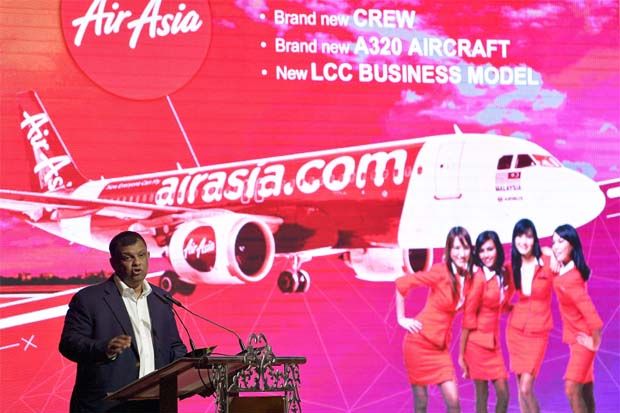AirAsia 3.0 to help save cost and enhance revenue
PETALING JAYA: After two years of working closely with Google and other data companies, AirAsia Group Bhd expects cost savings and revenue enhancement beginning next year.
Group CEO Tan Sri Tony Fernandes told a group of analysts during AirAsia 3.0 investor day that he expected about 4% less fuel burnt after crunching numbers and using the right aircraft for specific routes.
With hundreds and hundreds of other fuel initiatives including spare parts, he is looking at 10% to 15% cost savings by the end of 2020.
All these initiatives to save costs and enhance revenue are part of the airline’s move towards digitisation, which also allows it to be creative in its delivery and offering as well as personalise and segmentise its product offerings. This is made possible by analysing all the data that it has.
“On the revenue side, with all the rich data we have, we are able to serve customers better in terms of personalising all that. We have never done promos, as we normally send e-mails, but now we will be much more proactive in filling up the planes.
“We also now have the ability to dynamically adjust fares on the spot and all this will help us maximise revenue and save costs,’’ he added.
As part of the AirAsia 3.0 initiative, the plan is to make the entire journey nicer and comfortable for the traveller while various new initiatives will be introduced.
An analyst said in a report the AirAsia 3.0 plan would solidify the airline’s business via predictive maintenance, which would result in cost savings by FY20. It will enhance online user experience by transforming AirAsia.com into an all-in-one travel and lifestyle marketplace, facilitated by its mobile payment facility BIGPay.
The carrier’s cargo arm would cover more networks while eliminating the layers in air cargo fulfillment process, the analyst said.
Another research house said it “does not expect material earnings contribution in the near term from the implementation of the new business platforms.’’
A foreign brokerage added that “near-term losses from these new initiatives, which are likely to drag already-thin margins in the core airlines business.’’
AirAsia, according to Fernandes, has come a long way and was the first to revolutionise the way people travel low cost and used the Internet to sell tickets. But that did not come without skepticism and ridicule.
Eighteen years on, AirAsia is Asia’s largest low-cost carrier that prides on online options to reach out to travellers. It has flown more than 500 million people and has 260 planes on leaseback arrangements to save cost. Ancillary income accounted for 9% of revenue back in 2008 but now it makes up 21%, or RM2bil, of revenue.
Fernandes still sets sights on China and is working with a new partner to return to Vietnam. He is also bullish that AirAsia’s Indonesian and Philippine operations will be profitable soon.
AirAsia group is expected to release its first-quarter 2019 results on May 29. A local research house has forecast core net profit of RM147mil (minus 59% year-on-year).
“Management has done a good job to retain high load factors in first-quarter 2019. However, yields were exceptionally challenging in Malaysia, India and Thailand due to softer consumer demand and stiffer competition.
“We are also concerned on the group’s financial year 2019 growth plan to deploy a net addition of 18 aircraft. There has been no aircraft addition in first-quarter 2019, which implies that all the aircraft will be deployed in the subsequent quarters. We deem this as excessive under the current market conditions,” the research house said.
Source: TheStar

